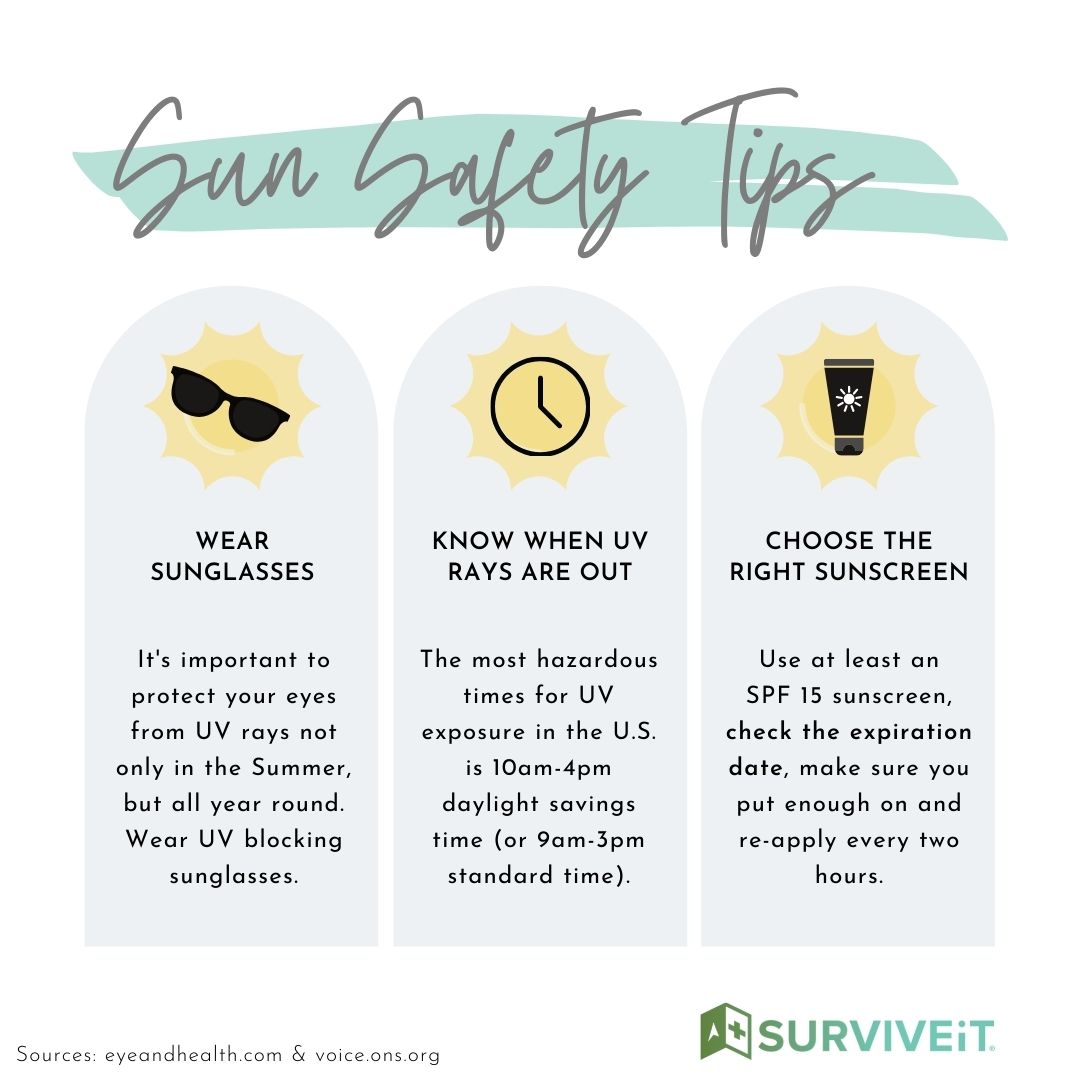5 Sun Safety Habits To Get Into This Month

In the Summer months, it’s so tempting to be out in the sunlight soaking in the warm rays. But it’s important to be aware of how much time you’re exposing your skin to UV rays and how to protect yourself.
Why is this important?
Too much exposure to UV rays can put you at risk of most types of skin cancer. This is why it’s so important to protect your skin throughout the entire year (because remember: UV rays are still around on overcast or cold days).
According to the CDC, UV rays tend to be strongest from 10am – 4pm (daylight savings time) and 9am -3pm (standard time).
Here are some sun safety habits to start this month if you’re not already practicing them all!
How to Protect Your Skin From The Sun
Source: cdc.gov
Shade
You can reduce your risk of sun damage and skin cancer by staying in the shade under an umbrella, tree, or other shelters. Your best bet to protect your skin is to use sunscreen or wear protective clothing when you’re outside even when you’re in the shade. It may also be best to make sure that you have a first aid box for home ready so that any sunburns from the sun can be dealt with quickly to prevent further issues.
Clothing
When possible, wear long-sleeved shirts and long pants and skirts, which can provide protection from UV rays. If wearing this type of clothing isn’t practical, try to wear a T-shirt or a beach cover-up. Clothes made from tightly woven fabric offer the best protection. A wet T-shirt offers much less UV protection than a dry one, and darker colors may offer more protection than lighter colors. Some clothing is certified under international standards as offering UV protection.
Additionally, if you have a job that requires you to spend long hours in the sun, you can include some safety gloves (check out some Unigloves reviews for reference) in your list of protective wear as well. Something that would protect you from sweat and allow a firm grip despite sweaty palms or the outside temperature.
Hat
For the most protection, wear a hat that has a brim all the way around that shades your face, ears, and the back of your neck. This becomes especially important if you work for long hours in the sun. Look at caterpillar workwear options that could have such hats as part of the collection, along with other protective clothing. A tightly woven fabric, such as canvas, works best to protect your skin from UV rays. Avoid straw hats with holes that let sunlight through. A darker hat may offer more UV protection.
If you wear a baseball cap, you should also protect your ears and the back of your neck by wearing clothing that covers those areas, using sunscreen, or staying in the shade.
Sunglasses
Sunglasses protect your eyes from UV rays and reduce the risk of cataracts. They also protect the tender skin around your eyes from sun exposure.
Sunglasses that block both UVA and UVB rays offer the best protection. Most sunglasses sold in the United States, regardless of cost, meet this standard. Wrap-around sunglasses work best because they block UV rays from sneaking in from the side. It may be a good idea to go through various sunglasses shop before investing in a pair of these.
Sunscreen
Put on broad spectrum sunscreen that blocks both UVA and UVB rays and has an SPF of 15 or higher before you go outside. Don’t forget to put a thick layer on all exposed skin. Get help for hard-to-reach places like your back. And remember, sunscreen works best when combined with other options.
Sunscreen is not recommended for babies who are 6 months old or younger. The U.S. Food and Drug Administration recommends keeping infants out of the sun during midday and using protective clothing if they have to be in the sun.
SPF. Sunscreens are assigned a sun protection factor (SPF), which is a number that rates how well they block UV rays. Higher numbers indicate more protection. You should use a broad spectrum sunscreen with SPF of 15 or higher.
Reapplication. Sunscreen wears off. Put it on again if you stay out in the sun for more than 2 hours and after swimming, sweating, or toweling off.
Expiration date. Check the sunscreen’s expiration date. Sunscreen without an expiration date has a shelf life of no more than 3 years. Its shelf life is shorter if it has been exposed to high temperatures.

